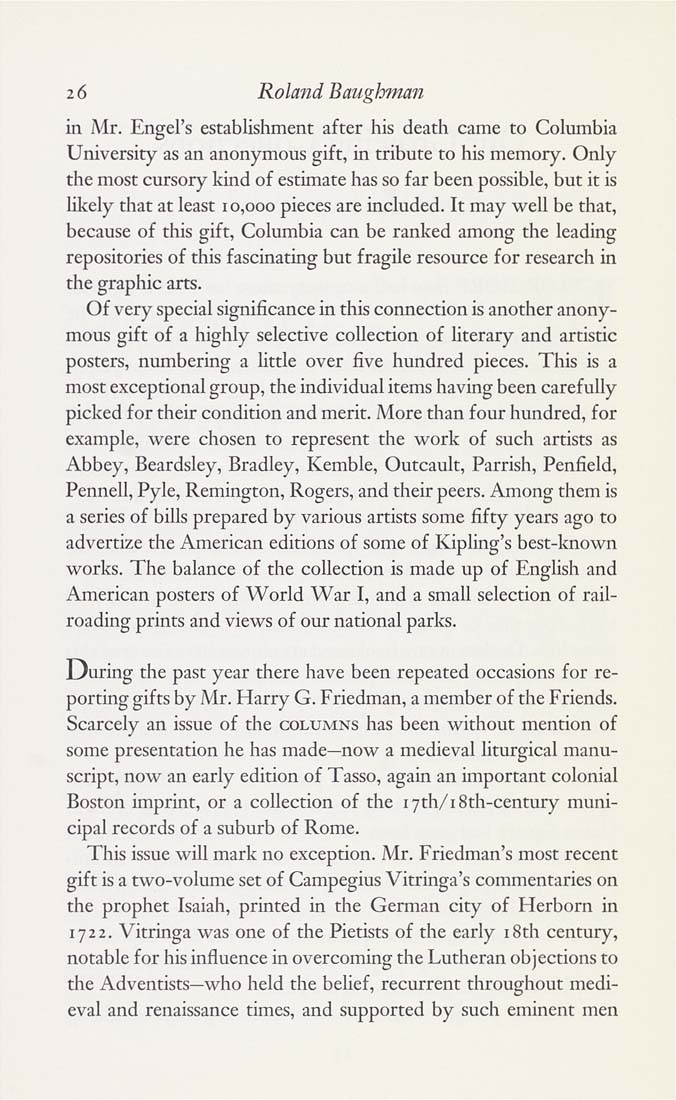Columbia Library columns (v.2(1952Nov-1953May))
(New York : Friends of the Columbia Libraries. )
|
||
|
|
|
|
| v.2,no.2(1953:Feb): Page 26 |

2 6 Roland Baughman in Mr. Engel's establishment after his death came to Columbia University as an anonymous gift, in tribute to his memory. Only the most cursory kind of estimate has so far been possible, but it is likely that at least 10,000 pieces are included. It may well be that, because of this gift, Columbia can be ranked among the leading repositories of this fascinating but fragile resource for research in the graphic arts. Of very special significance in this connection is another anony¬ mous gift of a highly selective collection of literary and artistic posters, numbering a little over five hundred pieces. This is a most exceptional group, the individual items having been carefully picked for their condition and merit. More than four hundred, for example, were chosen to represent the work of such artists as Abbey, Beardsley, Bradley, Kemble, Outcault, Parrish, Penfield, Pennell, Pyle, Remington, Rogers, and their peers. Among them is a series of bills prepared by various artists some fifty years ago to advertize the American editions of some of Kipling's best-known works. The balance of the collection is made up of English and American posters of World War I, and a small selection of rail¬ roading prints and views of our national parks. During the past year there have been repeated occasions for re¬ porting gifts by Mr. Harry G. Friedman, a member of the Friends. Scarcely an issue of the columns has been without mention of some presentation he has made—now a medieval liturgical manu¬ script, now an early edition of Tasso, again an important colonial Boston imprint, or a collection of the I7th/i8th-century muni¬ cipal records of a suburb of Rome. This issue will mark no exception. Mr. Friedman's most recent gift is a two-volume set of Campegius Vitringa's commentaries on the prophet Isaiah, printed in the German city of Herborn in 1722. Vitringa was one of the Pietists of the early i8th century, notable for his influence in overcoming the Lutheran objections to the Adventists—who held the belief, recurrent throughout medi¬ eval and renaissance times, and supported by such eminent men |
| v.2,no.2(1953:Feb): Page 26 |







